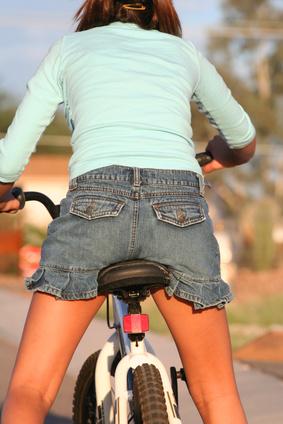Scoliosis is a curvature of the spine. Eighty percent of the time it is idiopathic, meaning no one knows the reason for the curvature, but it can run in families. Poor posture or carrying heavy book bags does not cause it. Scoliosis usually begins in children who are between 10 and 14 years of age.
Who Gets It
Both boys and girls can get scoliosis, but girls are more likely to have the condition progress to the point of needing treatment. Still, only about 10 percent of children who have scoliosis require bracing or surgery, the two treatment methods, according to the Keep Kids Healthy website. The other 90 percent will not have any long-lasting effects from the curve.
Screening
You can discover if your child has scoliosis during a routine screening. Your child takes off his shirt–girls can leave their bras on–stands straight, feet together. The screener checks to see if the shoulders, shoulder blades and hips are even. She will also check to see if your child’s spine is straight. Next, your child bends forward at the hips. If he has scoliosis, bending reveals an uneven spine or a rib hump.
If Your Child Has Scoliosis
If your child has scoliosis, you will take her to the doctor, and she will get an X-ray that lets you know how much her spine curves. If your child has a mild curve, you bring her in for periodic observation, usually every four to six months, so that your doctor can see if the curve is progressing. Typically, any progression of the curve stops two years after a girl has her first period or when boys reach 17 or 18.
If Scoliosis Progresses
If your child’s curve is rapidly progressing, you take him to an orthopedic specialist who might recommend bracing to prevent further curvature or surgery to correct the spine. Children wear the thoracolumbosacral orthosis brace most of the day and night or the Charleston bending brace, which they wear only at night. Your child wears the brace under his clothes; it will not extend up to the neck as old Milwaukee brace did.
Importance of Exercise
It is important for children with scoliosis to exercise, according to the National Institute of Arthritis and Musculoskeletal and Skin Diseases website. Exercise, while it won’t stop the progression, is good for the condition because it promotes general health. Exercise also minimizes the chances of the scoliosis limiting functionality over time.
Alternative Treatments
Alternative treatment methods exist, but they do not prevent this condition from progressing, according to the NIAMS website. They are chiropractic manipulation, electrical stimulation and nutritional supplementation.
Photo Credit
- girl back image by Wendi Evans from Fotolia.com





